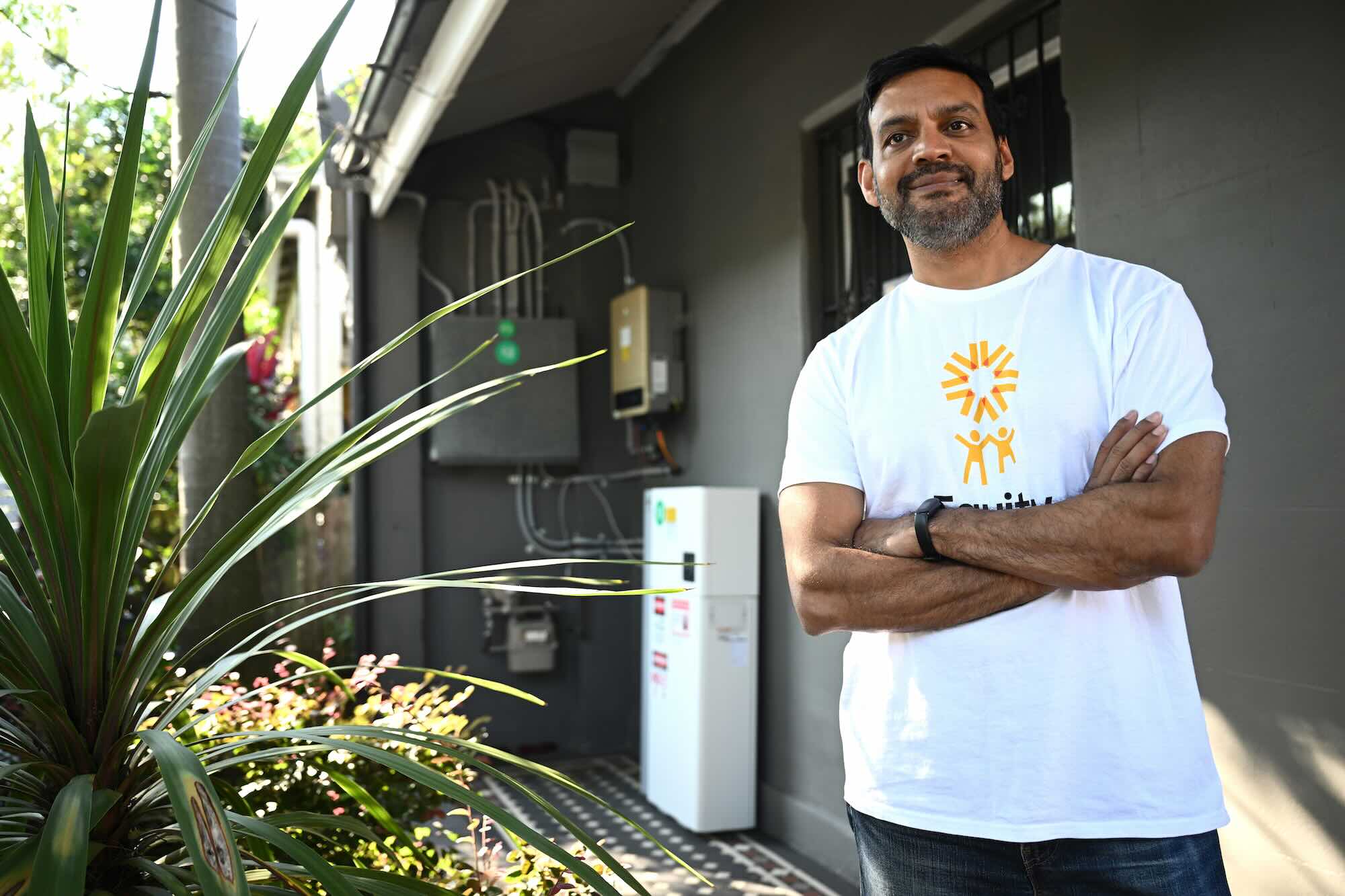Australians install 100,000 home battery systems in 17 weeks, and they are getting bigger

AAP Image/Dan Himbrechts
Tristan Edis
Oct 24, 2025
Battery
Commentary
By either the end of Friday or Monday, Australia will have surpassed 100,000 small battery systems installed and registered since 1 July when batteries became eligible for the STC rebate under the Small Scale Renewable Energy Scheme.
The capacity of household batteries registered in the 17 weeks since July 1 is just under 2,000 megawatt-hours (MWh). To put this into perspective it is enough capacity to cover the average daily electricity consumption of almost 400,000 households and is 15 times the size of the original South Australian Hornsdale Big Battery.
The chart below illustrates the number of battery systems registered each day since 1 July up until the end of Thursday. This market has not been a story of continuously onwards and upwards. Instead, it has been supply-constrained.

In the first three weeks we see rapid growth. This doesn’t reflect actual install rates, because systems were being installed at high rates even before 1 July. Instead, this represents an initial learning, scale-up phase related to the administration processes involved in claiming STCs from the regulator.
Then from the fourth week we look to have hit a ceiling flat-line of about a 1000 systems per working day. This lasted for the next seven weeks.
Our discussions with industry participants indicated this had nothing to do with underlying demand, which was running hot. Instead, it was a function of constraints in obtaining battery equipment and electricians with the required accreditation in battery installation.
But then from the 12th week we look to have been able to break free of that initial constraint to enter a new higher-level constraint of around 1500 systems per working day.
We suspect this is because battery stock availability has improved and electricians are lining up to get battery installation training and accreditation. No doubt we’ll see the rate of system installs increase further as more electricians obtain accreditation.
But given the backlogs being reported by solar and battery retailers, unfortunately, if you’re in the market to buy a battery, you’ll probably have to wait until next year to get it installed.
The other fascinating thing for nerds like me, is that the size of batteries being installed is much larger than the historical norm, and far larger than most households will need to meet their own consumption requirements.
The chart below shows in the green bars the average size of system registered each day, while the blue line shows the seven-day moving average of system size. The seven-day moving average has us at close to 25 kilowatt-hours (kWh) average system size.
By comparison the average Australian household tends to consume around 12 kilowatt-hours of electricity per day*. Although if a household was to own two electric vehicles and dump gas then their consumption would likely double, making that battery not so oversized.

Some see such oversized battery systems as a bad thing, but households choosing to install larger battery systems achieves major labour productivity gains and provides the power system with extra storage capacity at much lower economic cost than if they were to stick to a small system.
Also, the fact that households are installing batteries larger than their own consumption needs isn’t actually unusual – we’ve done exactly the same thing with solar.
The chart below shows the average capacity of an Australian residential solar system by year of installation. Back 10 years ago, the average solar system was 4 kilowatts (kW). For the typical household that would have produced 60% more electricity than the household could consume.
But we didn’t stop at 4 kW. Household solar systems got larger as installers sought to take advantage of falling solar PV module prices to encourage households to adopt larger solar systems which could then achieve major labour productivity gains per kilowatt installed.
Over last financial year the average household solar system reached 9.1 kW. This produces 80% more electricity than the typical home could consume, with the remainder exported to the grid.

Another way to think about battery size is that it is sized not just to meet a household’s own needs but also to soak up all the household’s solar generation so it can be re-directed into a higher value period of the electricity market.
With this lens on, a 25 kWh battery makes much more sense. That’s because the average new 9 kW solar system will usually produce an average of about 28 kWh of power excess to a household’s daytime load. This quite closely matches the storage capacity of the typical battery now being installed.
But for this to all work we need to make sure that two things happen:
– Batteries are coupled with control software that will export excess power to the grid during the evening peak demand period (4pm to 9pm);
– We see far more electricity retailers offering time varying feed-in tariffs that provide a premium for power exported during the evening peak period that reflects the far higher wholesale power prices during this time.
It’s important to note we don’t have to have everyone joining a virtual power plant program or signing up to highly volatile power prices via Amber to take advantage of these big household batteries. Although it would be even better if we could get far greater sign-up to VPP programs.
In end it is good news that households are choosing to invest their money in batteries that are of a scale that will benefit not just them personally, but also other electricity consumers more broadly
reneweconomy.com.au |








